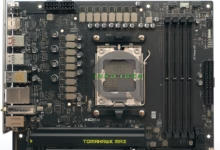
- Recognizing the signs of a failing AC system can prevent costly repairs and improve efficiency.
- Unusual noises, poor cooling, and increased energy bills indicate that professional services are needed.
- Regular maintenance can extend your AC system's lifespan and ensure it operates optimally throughout the year.
Introduction
Your air conditioning system is pivotal for maintaining a comfortable home environment, especially during the warm season. When your AC unit starts to falter, it can lead to discomfort, high utility costs, and the need for significant repairs or replacement if not addressed promptly. Recognizing the signs that your air conditioning system requires professional attention is essential in maintaining its longevity and ensuring your comfort. Let’s examine some of the most definitive indicators that suggest it’s time to call in the experts for a thorough checkup of your AC system.
Reasons Air Conditioning System Needs Professional Maintenance
Unexpected Rises in Energy Bills
An unexpected surge in your energy bill indicates that your air conditioning system may require attention. When the AC system loses efficiency, it has to work harder and longer to cool your home, leading to higher energy consumption. Professional HVAC services like Set Point Heating and Cooling are skilled in pinpointing energy inefficiencies and providing solutions that can help stabilize your energy costs.
Ineffective Cooling
A lack of adequate cooling is the most apparent sign that your AC system needs a professional inspection. If your home doesn’t seem to reach the desired temperature or if certain rooms are significantly warmer than others, there’s a strong probability that your system isn’t operating correctly. Various issues, such as low refrigerant levels or a malfunctioning compressor, could be the culprit, and they require specialized skills to diagnose and resolve.
Strange Noises
An air conditioner should run relatively quietly. However, unusual sounds such as grinding, squealing, rattling, or buzzing can be troubling. These sounds often indicate mechanical troubles, such as loose components, a slipping belt, or bearing issues. Neglecting these noises can result in more significant damage and potentially lead to costly repairs.
Frequent Cycling
While it’s normal for your air conditioner to cycle on and off to maintain the set temperature, persistent cycling isn’t. This could signify an oversized AC unit, a malfunctioning thermostat, or even electrical problems. Continuous cycling can strain your AC unit, reduce lifespan, and increase running costs.
Water Leaks
Water or moisture around your air conditioner isn’t just a minor inconvenience; it could indicate a refrigerant leak or a problem with the condensate drain. If left unchecked, leaks can lead to structural damage in your home and pose health risks by encouraging mold and mildew growth.
Bad Odors
Foul odors emanating from your AC unit are not to be overlooked. Musty smells may suggest mold or mildew inside the unit or ductwork, while a burning odor could indicate electrical issues. It’s essential to address these odors promptly, as they can affect the air quality in your home and may point to more significant problems within the system.
Poor Airflow
If the air from your vents isn’t as strong as it used to be or feels warm, it’s a sign of poor airflow. A clogged air filter, a broken motor, or blocked ductwork can cause this. Limited airflow forces the AC unit to work harder, increasing wear and tear and your energy bill.
Thermostat Issues
The thermostat is the command center of your AC system. Your whole system could be thrown off if it’s not functioning correctly. Signs of a faulty thermostat include the AC not turning on, uneven temperatures throughout the home, or constant thermostat adjustments to maintain comfortable temperatures. A technician can determine whether the problem is with the thermostat or the AC unit.
Age and Wear
The age of your air conditioning unit can also determine when it’s time for professional services. Most air conditioners have a lifespan of 10 to 15 years. If your unit is approaching or has exceeded this age range, it is likely to exhibit signs of wear and tear. Older units are less efficient and may also utilize outdated technology, making them less environmentally friendly and more costly.
Conclusion
Taking heed of the signs that your air conditioning system needs professional attention is vital in preventing breakdowns, maintaining efficiency, and ensuring your home remains a comfortable sanctuary. Ignoring these signs can lead to more significant and expensive issues over time, not to mention a potential complete system failure. If you notice any of the above indicators, reaching out for professional help is prudent. Regular maintenance and prompt repairs increase the longevity of your AC system, enabling it to serve you faithfully for years to come. With summertime approaching, now is the perfect time to ensure your air conditioning system is in top condition for uninterrupted comfort throughout the warmer months.
Do you have other ideas about the 9 Clear Signs Your Air Conditioning System Needs Professional Attention article? You can comment below or discuss more related to “9 Clear Signs Your Air Conditioning System Needs Professional Attention” in the CnwinTech Forum. Also, read more articles about Insurance Tech, Insurance Business Investment, or other exciting tech tips and tricks at CnwinTech.
Want a capable desktop PC at an affordable price for multitasking, playing games, and working? Check out and visit our store below!











